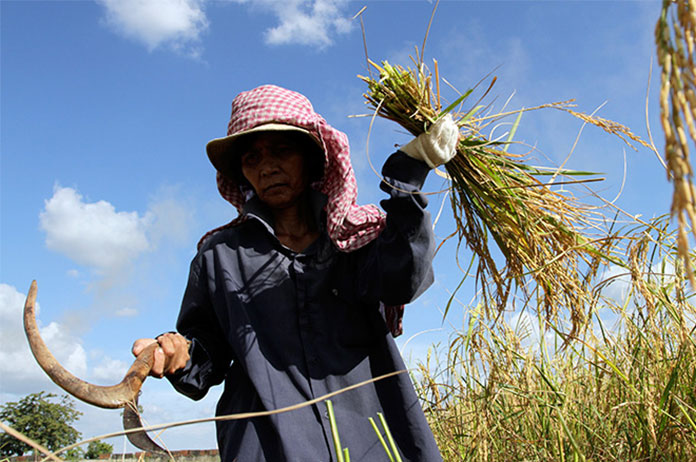Economic Outlook Bright: ADB

The country’s economy outlook for 2018 is marked by robust export growth, strong foreign investment, sustained growth in the number of tourist arrivals, and buoyant domestic demand, according to the latest report from the Asian Development Bank.
The Asia Development Outlook for 2018, released yesterday by ADB, puts the kingdom’s economic growth in 2018 and 2019 at seven percent, following solid growth in the country’s main drivers of economic growth – the construction sector, the garment and footwear industry, tourism, and domestic trade.
A slowdown in the garment and footwear industry in upcoming years will be offset by the emergence of non-traditional industries like electronics, auto parts, and bicycle manufacturing, as well as other more familiar industries like milled rice and rubber production.
All in all, ADB forecasts industrial activity will grow by 9.6 percent in 2018. The service sector, meanwhile, will continue to expand at 7.1 percent (the same rate as last year), propelled by a vibrant tourism industry, while the agricultural sector is expected to grow by just 1.8 percent.
Fiscal policy is expected to be more expansionary in 2018 than last year, with enhanced revenue growth balanced out by a higher level of public spending. Moreover, the report predicts that the current account deficit will widen as the cost of oil and other imported products rises.
“Cambodia’s strong economic growth in the short term is supported by robust exports, as well as higher foreign direct investment inflows, tourism activity, and domestic demand,” said Jan Hansen, ADB’s senior country economist. “However, rising wages, difficulty in doing business, and intensifying competition can undermine the country’s competitiveness.”
The report points out that national economic growth could be adversely affected by the national elections in July, with investors fearing they might usher in political instability. External risks include the possibility that the US might tighten interest rates faster than anticipated, heightened volatility in international financial markets, and hikes in the price of crude oil.
With 80 percent of total industrial activity taking place in the garment and footwear sector, Cambodia should focus on developing other more technologically advanced industries as well as investing in its human capital by training its labor force, said Mr. Hansen.
The ADB economist pointed out that while nominal wages have increased significantly in the garment industry during the past five years, that growth has not been matched by a proportional rise in productivity.
“If Cambodia wants to become a middle-income country, it needs to focus on skills and on moving up the regional value chain,” he said.
Another challenge Cambodia must overcome is the perceived difficulty of doing business in the country. In 2018, the World Bank ranked the kingdom 135 out of 190 countries in its Ease of Doing Business index. The kingdom performs particularly poorly in three categories – starting a business, getting construction permits, and enforcing contracts.
“On the one hand side, Cambodia is very open and enjoys a favorable climate for foreign direct investment. On the other, bureaucratic procedures in terms of opening and operating a company are high and cumbersome,” Mr. Hansen said.